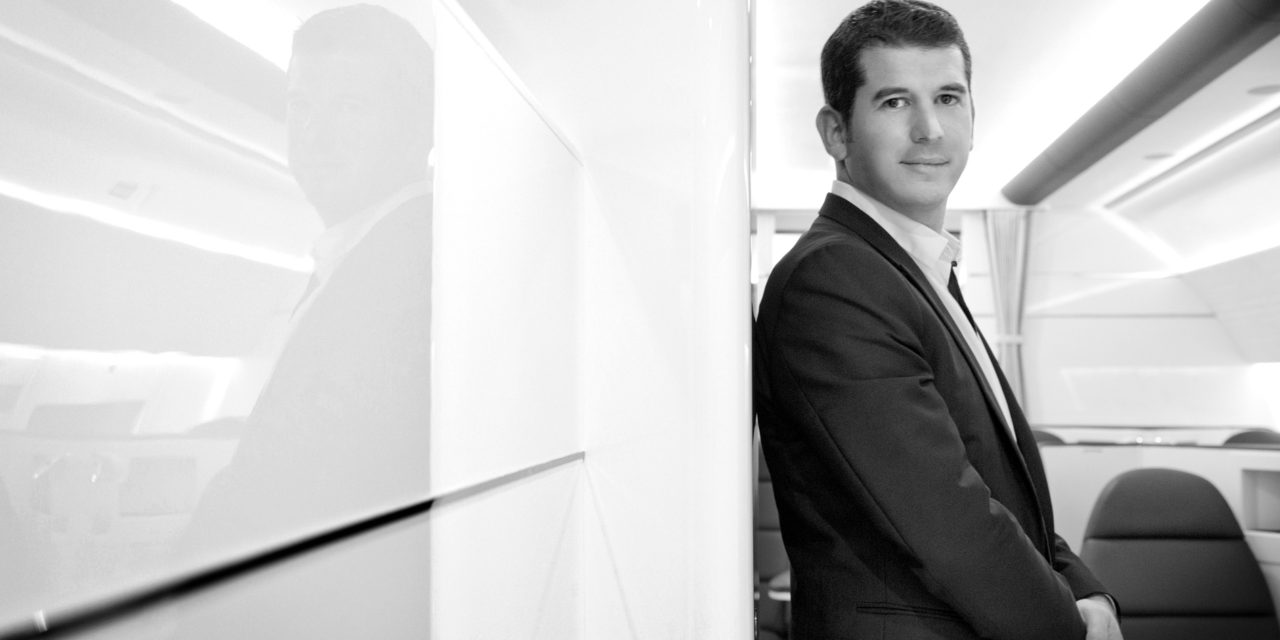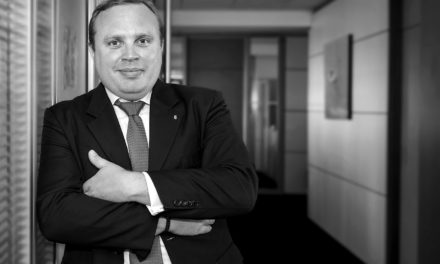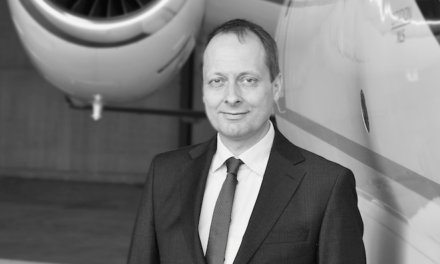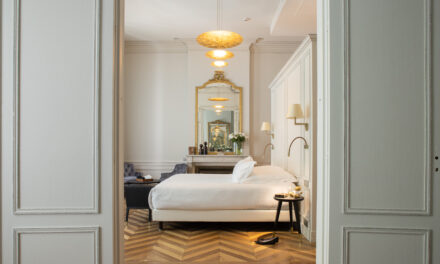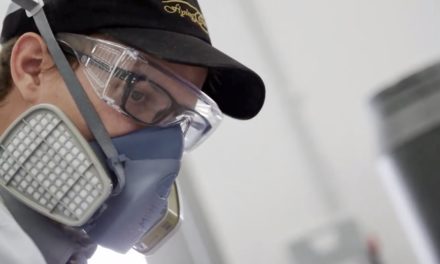Melody, Harmony, Kaolin… Beyond these names, new interior concepts presented for several years by Airbus Corporate Jet. But above all, the style of one designer, Sylvain Mariat, who for more than ten years has revolutionized cabin design for the European aircraft manufacturer, apart from in the business aviation sector. He has indeed managed to merge contemporary design and the latest technology to respond more closely to societal trends. We’ve met with Sylvain Mariat to learn more about his art.
How did you come to lead the design studio at Airbus Corporate Jet?
I am above all an aviation enthusiast who was inspired by a father who was not only a helicopter pilot in a high mountain gendarmerie platoon but also a private pilot in his spare time. So I soaked in this environment growing up and started flying very early on. My desire to become a fighter pilot moved away for medical reasons and allowed me to refocus on my second passion, drawing, and especially on the themes of design and architecture. After a competition, I entered the National School of Applied Arts and Crafts (ENSAAMA) Olivier-de-Serres in Paris. During this time, I was trained in general design with a transport orientation. I did my first internship in a company specializing in cabin design for Dassault Falcon and for various types of models of Eurocopter (now Airbus Helicopters). This first contact allowed me to realize that it was possible to combine my two passions in fine.
I continued my studies in Birmingham and finalized my study cycle with a double graduation at the engineering school and at the School of Fine Arts of St Etienne. In 2003, at the end of my study cycle, I won the national design competition that allowed me to join Airbus as part of the A380 ambience design finalization team.
Alongside this work, Airbus also entrusted me with the design of the rest areas. The idea was to give a new dimension to this type of space within the Airbus range. In 2008, the creation of Airbus Corporate Jet Center – ACJC – was a turning point in my career. Benoit Defforge suggested I set up a design office as a subsidiary dedicated to this sector to be able to offer our design services to the customers. Ten years later, ACJC was transformed renamed Airbus Interior Services (AIS). It is dedicated to engineering in the commercial aviation sector. However, with my experience on the VIP range, I continued my work in ACJ thanks to Benoit who wished to keep me at the head of the dedicated design office within this department.
How many cabins have you created since your arrival at Airbus and more specifically at Airbus Corporate Jet?
In total, I created more than a dozen cabin layout designs. This allowed me to be visible, especially with customers.
Unlike its main competitor, Airbus has its own cabin design center. What advantages to you enjoy from it?
We are indeed very experienced in the management of interior fittings since we have built and delivered more than 70 cabins. This expertise is important because a cabin layout has an influence on the performance of the aircraft. It is therefore essential to have an in-house design office that knows the specifications of the aircraft and will work on a concept based on them. That being said, my role is not just about creating concepts. It is also to accompany the customers and owners and their designers to help them in the development of their projects without intervening on the design itself. It is also a little-known role, but it is important for our customers to always have a perfect cabin. As such I must emphasize that it is very important for me to be in contact with external designers. This also opens up the field of possibilities on what can be done on an ACJ and discover other worlds of creations, which, I must admit, is very rewarding.
As an Airbus designer for over 10 years, what have you seen in terms of cabin fittings evolving?
When Benoit Defforge asked me in 2008 to work at ACJC, I had a slightly outdated vision of business jet layouts. Beige interiors, gold plating and maple were the main cabin amenities. I needed to break away from convention. Over the course of these ten years we first lost this “copy and paste” side between the different interiors which had long flourished in business aviation. A true “interior” revolution was actually established in this sector that has been enriched by new visions, including an environment that is relaxing and exotic for the customer. The design has evolved into simpler and more refined lines similar to trends in hotels, places where our customers often are and who have often inspired their interiors. They want to find this innovative spirit of a modern design but which remains above all warm. As such we can note the return to a vintage inspired design but also “modern art deco” that we find in the world of cars and motorcycles.
Beyond this, the cabin design has also been nourished by the transcribing of our customers’ homes within their own aircraft. This made it possible to create zones that define different types of ambience, even though they are well identified according to the lights, sounds and many other elements. In conclusion, the view during these ten years has become that is it ultimately up to the designer to breathe new life and styles into the interiors. And meeting with the customer is a key element in the success of the concept.
What processes do you follow?
When I meet an owner, I try to discover his tastes and to better understand his culture to develop a concept that truly corresponds to his experience, his birthplace, his travels, his passions.
I show him images that don’t necessarily come from aircraft development but rather housing or hotels in order to re-transcribe his personality as close to the definition of the design of his cabin. We also take into account his cultural and artistic orientations and from there I realize several drawings until the finalization of the concept itself, which is the result of the client’s remarks. It’s much richer and exciting for a designer to immerse themselves in the customer’s life to be closer to his expectations. The advantage of an Airbus is that we can start from a blank sheet, as on an ACJ320 where we have almost 100m2. It is therefore also necessary to define what this customer wants to do in this living space that will be the aircraft cabin.
What are the limits to creativity?
The role of the designer is to take into account the limits of certification for the creation of an interior. We cannot, for example, modify the structure of the aircraft itself or else it requires a higher cost, but also the extension of the lead time by testing and certification changes. But in principle I tend to never say no to a customer because I think it is a way to push innovations forward.
I prefer to evaluate what needs to be done and come back to them to find a solution if their desire is not feasible. The limits are often the constraints related to airworthiness regulations. But if these exist it is also and especially for security reasons. They are therefore unavoidable. However, I have the advantage of working at Airbus with certification engineers, which allows us to make certain achievements possible. It is a major asset as a designer to work with all the trades related to the design of a cabin. My job is also to integrate in the cabin the mandatory elements, therefore binding, and to make sure to associate them with the overall harmony of the whole.
What is the next « revolution » in cabin design?
The « galleys » section – the space used as a kitchen in cabins – will no doubt be the part of the cabin which is going to evolve in the most remarkable way. This little revolution follows the trends in restaurants where the meals are prepared in front of the customer. It is also an extension of what has become common in a home where the open kitchen has become a living space for essential exchanges as well as a living room. In fact, the idea is that the galley truly becomes a living space integrated into the entire cabin. “Live Cooking” concept can be transcribed on board, with a chef cooking during the flight. In addition to the interaction and user-friendliness of the moment, this formula also allows for custom-made meals prepared in front of the passenger. It’s the luxury of having a choice. This concept is more and more requested during our exchanges with customers and it is undoubtedly a space that will revolutionize the way of approaching the cabin design. I have integrated this feature when I drew the Melody concept.
In a general way, comfort will also improve more and more with the development of interiors. It is a transposition of what is happening in commercial aviation with the birth of new classes. There is more and more demand from customers who request the realization of small suites or modular zones so that passengers can rest in conditions of optimum comfort.
This is interesting in terms of design because it brings about new thinking on the design of seats. Beyond pure design, it must also be emphasized that an evolution is being born in the design of interior elements and especially furniture. The collage of honeycomb panels will gradually disappear in favor of molding elements that will gain in terms of different possible forms, but also in strength and weight.
Has connectivity on board had a big impact on the cabin design?
Over the years, we are going to have obsolescence problems on the various elements of in-flight entertainment systems. But the development of connectivity will enable us, not only to no longer be dependent on this obsolescence, especially for screens, but also to respond in a sustainable way to the development of new systems. Connectivity undoubtedly has a positive impact on the cabin design. It allows a true mobility thanks to the WIFI with flexible supports and gives access to all the functions through this (temperature, sound ..).
This has also allowed to limit the wiring and therefore also reduce the weight of the aircraft. This weight gain has resulted in a substantial improvement in the performance of the aircraft including its range. The removal of a part of the wiring also promotes space by eliminating for example the side edges that run all the way through the cabin and are usually located under the portholes. On our latest designs, we took into account this specificity and reworked the form under the porthole. This allowed us not only to gain more space than we imagined but also to refine the interior design.
Because of its innovations, has the A380 had an impact on the interior design especially for the ACJ range?
The first impact related to the A380 program is without doubt the level of noise in the cabin. The aircraft surprised many passengers by its silence on board. Thanks to the A380 program, we are now able to be very quiet on our ACJs, especially on the latest aircraft, where we managed to be on values equal to or lower than 47 dB. A very low noise that allows to speak normally in the cabin.
The A380 has also offered a wide range of customization for the customer which has paved the way for many innovations in many areas. Examples include moodlighting scenarios based on the flight or the ability to access a shower in the aircraft as it exists in some airlines.
These advances obviously had spin-offs for the ACJ range.
Could you explain the latest Harmony concept launched during the last Ebace show?
Harmony is an evolution of the previous Melody concept but for the ACJ330neo. The idea was to be able to illustrate what can be done in the space we have in a lounge on an ACJ330neo. This concept, transposable on the ACJ350, was developed for private, not for governmental aviation. Most furniture is curved in opposition to the usual lexical field. The innovation also lies in this design at the opening between the galley and the guest area connected by a bar. For now, Harmony remains only a concept to get a feedback from professionals, and especially from customers. And on this point, we have had very positive returns.

